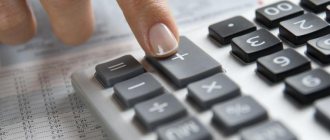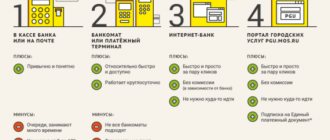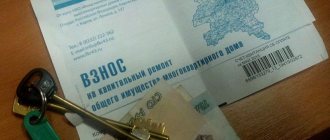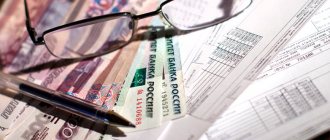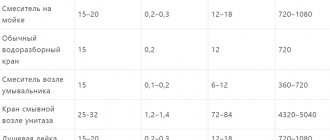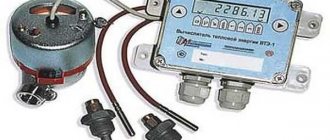Every month you have to pay bills, including payment for water supplied to your home. To save money and control the consumption of this necessary resource, special meters are installed. In addition, there are such counting devices separately for hot (DHW) and cold (CW) water.
In this case, the counters will tell you how to count; they differ in color: red is for a hot resource, blue is for a cold resource. There are eight digits on the dial of the device, the last three of which are marked in red, the rest – in black. Liters consumed are marked in red. Next, you should calculate the water using the meter.
How to count water using a meter: example
Many users are concerned about the question of how to calculate water using a meter. The first five digits, which are black, are transmitted to the controlling company. These are cubes of water consumption for a certain time. If a new device was installed, and at the end of the reporting period the value on it, for example, is 00024843, then this means that consumers in this house used 24 cubic meters and 843 liters of water. So how to correctly calculate how much to pay? When transmitting readings to the monitoring company, it is advisable to round them up, that is, transfer 24 cubic meters. If after another month the meter readings correspond to 000495900, in order to calculate how much to pay, the readings of the previous month should be subtracted from them. Here's how to calculate it:
49 — 24= 25
The calculation system is not at all complicated. That is, the consumption of the last month is 25 cubic meters, therefore, we will find out how much to pay after multiplying by the tariff for 1 cubic meter. In subsequent billing months, payment is also calculated.
How to transmit water meter readings
Possible methods of transmitting readings are specified by the operating organization. Users are asked to choose one of the following methods:
- reporting meter readings to the duty officer or dispatcher by telephone;
- sending readings through your personal account on the management company’s website;
- visiting the office of the management company and recording testimony in a special journal.
Where do the numbers come from if there is a counter with a pulse output?
Meters with a pulse output differ from conventional ones in that, in addition to roller digit indicators, they are equipped with a mechanism for creating short-term electrical impulses. On the front panel of such meters, water consumption is displayed in the usual form.
How many Gcal in 1 m3 of hot water
How to calculate hot water? You have to pay more for hot water supply, because it uses heat to heat it up. So how many Gcal are in 1 m3 of hot water? In today's difficult living conditions, the topic of saving is extremely acute.
Important! 1 Gcal is the amount of heat required to warm a thousand cubic meters by one degree. It follows from this that there are 0.001 Gcal in one cubic meter. When calculating, this value is added to the total losses in the house, which are caused by the inevitable cooling of the water while it reaches the payer’s apartment. The pipes through which this resource passes are a common property, so everyone must also pay for these losses.
The price of hot water especially increases where it passes through heated towel rails in bathrooms, in fact heating the entire room. In this case, up to thirty-five percent of heat can be lost. Rather, these heat costs relate to heating. But the meter doesn’t know this; it only calculates the flow rate that has reached it.
Unfortunately, it is impossible to change the existing pipe layout. It is not recommended to throw away heated towel rails, because they are a component of the heating system; without them, the normal circulation of the resource through the pipes will be disrupted. In this case, it will need to be drained for a long time, which will definitely cost a pretty penny.
There is another concept of 1 cubic meter of hot water - for heating. The amount of heat for DHW does not change in this case either. But the usual method of calculation in this case is incorrect. What do these columns mean on the receipt and what does the payment consist of?
The consumer divides the indicators from column Q by column V1, i.e. Gcal per m3, resulting in a huge value. This is especially true for those who have volatile automation installed. In this case, the figures are significantly overestimated. The user is perplexed why they have to pay so much more for a cubic meter of water. Why was it necessary to bear the costs of installation and a new device if the price for the consumed water supply has not decreased? Is the company lying?
Important! One Gcal is the volume of heat that is needed to heat a thousand cubic meters of water by one degree (it would be more correct to say thousands of tons). The note about tons was not made in vain, because the density of water at different pressures and temperatures is not the same. When heated, it expands and its quantity increases. But when she went around all the apartments, her temperature drops and the volume decreases, but in tons it remains unchanged.
The error may be caused by the inaccuracy of the measuring instruments themselves. A discrepancy may occur when heat consumption is less than 0.5 Gcal hourly, since reprogramming is possible based on the actual pressure in the IHP. Pressure does not have a significant impact on overall accounting (no more than 0.1 percent of overall accuracy). An error may also be made when calculating the temperature difference between the hot water supply and return data.
Calculation of general house costs for hot water
There is a similar formula that helps calculate overused hot water. The same values are taken into account, only related to hot water supply.
However, our Government took care of citizens burdened with utility bills, and in 2013 established consumption standards for general household needs.
These norms restrain the “appetites” of management companies and are developed independently at the local level. To find out their values, contact your management company in writing.
How to challenge water heating regulations
What to do if the consumer does not agree with the standard for heating water, and is it possible to challenge it? Of course you can. For example, if a water heater breaks down, the water supply organization must repair it urgently. All residents must pay for the repairs if it is an apartment building.
If you need to resolve the issue individually, you should call the organization responsible for the water supply and call an inspector who will draw up a malfunction report. If you cannot reach an understanding with the company by any means, you can go to court. But in such cases, litigation is rarely resolved in favor of the residents.
A water meter helps save money, but it is important to be able to correctly interpret its readings and calculate payments. Determining how much to pay for each of the meters (for hot and cold water supply) is not at all difficult. You need to independently take into account the cubic meters consumed each month and compare them with the data in the housing and communal services receipt. As with all utilities, payments for water are made monthly. The Internet will help you find out what the tariff is this year.
We calculated 3.4 million rubles for cold water for 2 months.
Legal relations in the field of water supply and sanitation are regulated by the Federal Law of December 7, 2011 No. 416-FZ “On Water Supply and Sanitation” (hereinafter referred to as Law No. 416-FZ), as well as the Rules for Cold Water Supply and Sanitation, approved by the Decree of the Government of the Russian Federation of July 29, 2013 No. 644 (hereinafter referred to as Rules No. 644), Rules for the organization of commercial accounting of water and wastewater, approved by Decree of the Government of the Russian Federation of September 4, 2013 No. 776 (hereinafter referred to as Rules No. 776). In accordance with paragraph 14 of Rules No. 776, commercial metering by calculation method is allowed in the following cases: 1) in the absence of a metering device, including in the case of unauthorized connection and (or) use of centralized hot water supply, cold water supply and (or) sanitation systems; 2) in case of malfunction of the metering device; 3) in case of violation for more than six months of the deadline for submitting meter readings that are the property of the subscriber, organizations that operate water supply and sewerage networks, except for cases of prior notification by the subscriber of such an organization about a temporary cessation of water consumption. Thus, the calculation method is used in the absence (malfunction) of metering devices and in other cases when it is impossible to determine the subscriber’s actual consumption of drinking water and wastewater discharge. According to paragraph 15 of Rules No. 776, when calculating the commercial water metering method, the following are used: a) the method of accounting for the throughput of devices and structures used for connection to centralized water supply systems; b) the method of calculating the average monthly (average daily, average hourly) amount of supplied (transported) water; c) method of guaranteed volume of water supply; d) method of summing up water volumes.4 A 05-11262/2016 Cases of application of the method of accounting for the capacity of devices and structures used for connection to centralized water supply systems, when they operate around the clock with a full cross-section at the point of connection to the centralized water supply system and at the speed of water movement 1.2 meters per second, are listed in subparagraphs “a-d” of paragraph 16 of Rules No. 776. According to subparagraph “a” of paragraph 16 of the Rules in case of unauthorized connection and (or) use of centralized water supply systems for the period of time during which such unauthorized connection and (or) use was carried out, but not more than 3 years. In this case, the period of time during which the unauthorized connection and (or) use of centralized water supply systems was carried out is determined from the date of the previous control check of the technical condition of the centralized water supply system facilities in the place where the fact of unauthorized connection and (or) use of centralized water supply systems was later revealed , until the day the unauthorized connection is eliminated (termination of unauthorized use). If the subscriber, within 1 year after the entry into force of these Rules, informed the organization providing hot water supply, cold water supply, about unauthorized connection and (or) use of a centralized water supply system, the calculation method for determining the amount of water supplied (received) is applied no more than 6 months; By virtue of subparagraph “b” of paragraph 16 of Rules No. 776, the use of the method of accounting for the throughput of devices and structures used for connection to centralized water supply systems, when they operate around the clock with a full cross-section at the point of connection to the centralized water supply system and at a water speed of 1.2 meters per second is carried out 60 days from the date of malfunction of the metering device (including verification after the expiration of the inter-verification interval) or dismantling of the metering device before the metering device is admitted to operation or verification without dismantling the metering device.
According to paragraph 17 of Rules No. 776, the method of the calculated average monthly (average daily, average hourly) amount of supplied (transported) water, used on the basis of meter readings for the last year, is applied in the event of a malfunction of such a meter or dismantling of such a meter in connection with its verification , repair or replacement, but no more than within 60 days after establishing the fact of a malfunction of the metering device or dismantling the metering device, unless a different period is agreed upon with the organization providing hot water supply, cold water supply, and does not apply in cases of using control (parallel) devices accounting.
How to remove data correctly?
Water measuring devices are distinguished by the color of the device body:
- cold water – blue or black meter;
- hot water - meter in a red housing.
Each device can be marked with a marker: “X” and “G”. There will definitely not be any confusion.
On a kind of “display” under the glass of the water meter there is a scale with numbers - each of them in its own window. The numbers come first in black, followed by red .
The receipt shows the previous meter readings
Analysis using example No. 1
- 00126 - receipt 00158341 - your indicator. 00158 cubic meters and 341 liters, rounded up to 159 cubic meters.
- We subtract the previous one from the new indicator. 159-126=33cub.m.
- These 33 cubic meters are subject to payment.
Put everything on your payment receipt. It contains a column for the cost per 1 cubic meter.
Price
The cost of cold and hot water is set at the discretion of the city government. There is no fixed amount for water throughout the country.
Multiply your resulting numbers by the cost per cubic meter. Here is your amount to pay for water.
The calculation formula is the same for both hot and cold water. If you have several water meters installed in your house, then, following the example, you first take the readings from the hot water and add up all the numbers.
